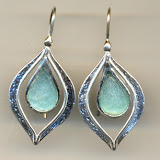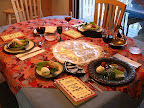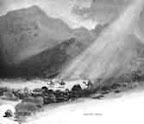Hard at Work in the Jobless Future
By James H. Lee
Jobs are disappearing, but there’s still a future for work. An
investment manager looks at how automation and information technology
are changing the economic landscape and forcing workers to forge new
career paths beyond outdated ideas about permanent employment.
Futurists have long been following the impacts of automation on
jobs—not just in manufacturing, but also increasingly in white-collar
work. Those in financial services, for example, are being lost to
software algorithms, and intelligent computers.*
Terms used for this phenomenon include “off-peopling” and
“othersourcing.” As Jared Weiner of Weiner, Edrich, Brown recently
observed, “Those jobs are not going to return—they can be done more
efficiently and error-free by intelligent software.”
In the investment business (in which I work), we are seeing the
replacement of financial analysts with quantitative analytic systems,
and floor traders with trading algorithms. Mutual funds and traditional
portfolio managers now compete against ETFs (exchange-traded funds),
many of which offer completely automated strategies.
Industries that undergo this transformation don’t disappear, but the
number of jobs that they support changes drastically. Consider the
business of farming, which employed half the population in the early
1900s but now provides just 3% of all jobs. The United States is still a
huge exporter of food; it is simply a far more efficient food producer
now in terms of total output per farm worker.
In an ideal world, jobs would be plentiful, competitive, and pay
well. Most job opportunities have two of these qualities but not all
three. Medicine, law, and finance are jobs that are both competitive and
pay well. Retail, hospitality, and personal services are competitive
but pay low wages. Unions often ensure that jobs pay well and are
plentiful, only to later find that those jobs and related industries are
no longer competitive.
Since 1970, manufacturing jobs as a percentage of total employment
have declined from a quarter of payrolls to less than 10%. Some of this
decline is from outsourcing, some is a result of othersourcing. Those
looking for a rebound in manufacturing jobs will likely be disappointed.
These jobs will probably not be replaced—not in the United States and
possibly not overseas, either.
This is all a part of the transition toward a postindustrial economy.
Jeff Dachis, Internet consulting legend and founder of Razorfish,
coined the phrase “everything that can be digital, will be.” To the
extent that the world becomes more digital, it will also become more
global. To the extent that the economy remains physical, business may
become more local.
The question is, what is the future of work, and what can we do about it? Here are some ideas.
The Future of Work: Emerging Trends
Work will always be about finding what other people want and need,
and then creating practical solutions to fulfill those desires. Our
basic assumptions about how work gets done are what’s changing. It’s
less about having a fixed location and schedule and more about
thoughtful and engaged activity. Increasingly, this inspiration can
happen anytime, anyplace.
There is a blurring of distinctions among work, play, and
professional development. The ways that we measure productivity will be
less focused on time spent and more about the value of the ideas and the
quality of the output. People are also going to have a much better
awareness of when good work is being done.
The old model of work provided an enormous level of predictability.
In previous eras, people had a sense of job security and knew how much
they would earn on a monthly basis. This gave people a certain sense of
confidence in their ability to maintain large amounts of debt. The
consumer economy thrived on this system for more than half a century.
Location-based and formal jobs will continue to exist, of course, but
these will become smaller slices of the overall economy.
The new trends for the workplace have significantly less built-in
certainty. We will all need to rethink, redefine, and broaden our
sources of economic security. To the extent that people are developing a
broader range of skills, we will also become more resilient and capable
of adapting to change.
Finally, we can expect that people will redefine what they truly need
in a physical sense and find better ways of fulfilling their needs.
This involves sharing and making smarter use of the assets we already
have. Businesses are doing the same. The outcome could be an economy
that balances the needs between economic efficiency and human values.
Multitasking Careers
In Escape from Cubicle Nation (Berkley Trade, 2010), career
coach Pamela Slim encourages corporate employees to start a “side
hustle” to try out new business ideas. She also recommends having a side
hustle as a backup plan in the event of job loss. This strategy is not
just for corporate types, and Slim says that “it can also be a great
backup for small business owners affected by shifting markets and slow
sales.”
She says that an ideal side hustle is money-making activity that is
doable, enjoyable, can generate quick cash flow, and does not require
significant investment. Examples that she includes are businesses such
as Web design, massage, tax preparation, photography, and personal
training.
The new norm is for people to maintain and develop skill sets in
multiple simultaneous careers. In this environment, the ability to learn
is something of a survival skill. Education never stops, and the line
between working and learning becomes increasingly blurred.
After getting her PhD in gastrointestinal medicine, Helen Samson
Mullen spent years working for a pharmaceutical company—first as a
medical researcher and then as an independent consultant. More recently,
she has been getting certifications for her career transition as a life
coach. Clinical project management is now her “side hustle” to bring in
cash flow while she builds her coaching business. Meanwhile, she’s also
writing a book and manages her own Web site. Even with so many things
happening at once, Helen told me that “life is so much less crazy now
than it was when I was consulting. I was always searching for life
balance and now feel like I’m moving into harmony.” Her husband, Rob, is
managing some interesting career shifts of his own, and is making a
lateral move from a 22-year career in pharmaceuticals to starting his
own insurance agency with State Farm.
Fixed hours, fixed location, and fixed jobs are quickly becoming a
thing of the past for many industries, as opportunities become more
fluid and transient. The 40-hour workweek is becoming less relevant as
we see more subcontractors, temps, freelancers, and self-employed. The
U.S. Government Accountability Office estimates that these “contingent
workers” now make up a third of the workforce. Uncertain economics make
long-term employment contracts less realistic, while improvements in
communications make it easier to subcontract even complex jobs to
knowledge workers who log in from airports, home offices, and coffee
shops.
Results-Only Workplace Environments
Imagine an office where meetings are optional. Nobody talks about how
many hours they worked last week. People have an unlimited amount of
vacation and paid time off. Work is done anytime and anywhere, based
entirely on individual needs and preferences. Finally, employees at all
levels are encouraged to stop doing anything that is a waste of their
time, their customers’ time, or the company’s time.
There is a catch: Quality work needs to be completed on schedule and within budget.
Sound like a radical utopia? These are all basic principles of the
Results Only Work Environment (ROWE), as pioneered by Cali Ressler and
Jody Thompson while they were human resource managers for Best Buy.
It’s “management by objective” taken to a whole new level, Ressler and Thompson write in their book, Why Work Sucks and How to Fix It (Portfolio, 2008).
Best Buy’s headquarters was one of the first offices to implement the
ROWE a little over five years ago, according to Ressler and Thompson.
The movement is small, but growing. The Gap Outlet, Valspar, and a
number of Minneapolis-based municipal departments have implemented the
strategy. Today, 10,000 employees now work in some form of ROWE.
Employees don’t even know if they are working fewer hours (they no
longer count them), but firms that have adopted the practice have often
shown significant improvements in productivity.
“Thanks to ROWE, people at Best Buy are happier with their lives and
their work,” Ressler and Thompson write in their book. “The company has
benefited, too, with increases in productivity averaging 35% and sharp
decreases in voluntary turnover rates, as much as 90% in some
divisions.”
Interestingly enough, the process tends to reveal workers who do not
produce results, causing involuntary terminations to creep upward. ROWE
managers learn how to treat their employees like responsible grown-ups.
There is no time tracking or micromanagement.
“The funny thing is that once employees experience a ROWE they don’t
want to work any other way,” they write. “So employees give back. They
get smarter about their work because they want to make sure they get
results. They know that if they can deliver results then in exchange
they will get trust and control over their time.”
Co-Working
There are now more alternatives to either working at home alone or
being part of a much larger office. Co-working spaces are shared work
facilities where people can get together in an officelike environment
while telecommuting or starting up new businesses.
“We provide space and opportunity for people that don’t have it,” Wes
Garnett, founder of The coIN Loft, a co-working space in Wilmington,
Delaware, told me.
Getting office space in the traditional sense can be an expensive
proposition—with multiyear leases, renovation costs, monthly utilities.
“For $200 [a month], you can have access to presentation facilities, a
conference room, and a dedicated place to work.” And coIN Loft offers
day rates for people with less-frequent space needs.
According to Garnett, more people are going to co-working spaces as
“community centers for people with ideas and entrepreneurial
inclinations.” He explains that co-working spaces provide a physical
proximity that allows people to develop natural networks and exchange
ideas on projects.
“We all know that we’re happier and more productive together, than
alone” is the motto for nearby Independents Hall in Philadelphia.
Co-working visas enable people to choose from among 200 locations across the United States and in three dozen other countries.
Silicon Colleagues
Expert systems such as IBM’s Watson are now “smarter” than real people—at least on the game show Jeopardy.
It was a moment in television history when Watson decimated previous
human champions Ken Jennings and Brad Rutter on trivia questions, which
included categories such as “Chicks Dig Me.”
IBM’s Watson is a software-based knowledge system with unusually
robust voice recognition. IBM has stated that its initial markets for
the technology are health care, financial services, and customer
relations. In the beginning, these systems will work side-by-side with
human agents, whispering in their ear to prompt them with appropriate
questions and answers that they might not have considered otherwise. In
the next decade, they may replace people altogether in jobs that require
simple requests for information.
“It’s a way for America to get back its call centers,” futurist Garry
Golden told me. He sees such expert systems reaching the workplace in
the next two to three years.
Opting Out
A changing economy is causing people to rethink their priorities. In a
recent survey by Ogilvy and Mather, 76% of respondents reported that
they would rather spend more time with their families than make more
money.
Similarly, the Associated Press has reported that less than half of all Americans say they are happy with their jobs.
Given the stresses of the modern workplace, it is not surprising that
more people are simply “opting out” of the workforce. Since 1998, there
has been a slight decline in the labor force participation rate—about
5% for men and 3% for women. This trend may accelerate once extensions
to unemployment benefits expire. Some of these people are joining the
DIY movement, and others are becoming homesteaders.
A shift back toward one-income households can happen when the costs
of taxes, commuting, and child care consume a large portion of earnings.
People who opt out are not considered unemployed, as they are no longer
actively looking for paid work. Their focus often reflects a shift in
values toward other activities, such as raising kids, volunteer work, or
living simply. This type of lifestyle is often precarious and carries
risks, two factors that can be mitigated through public policy that
extends the social safety net to better cover informal working as well
as formal employment. But this way of life also carries rewards and is
becoming a more and more attractive option for millions of people.
The Future of Work, Personified
Justin Caggiano is a laid-back rock-climbing guide whom my wife and I
met during our last vacation in the red canyons of Moab, Utah. He’s
also been guiding rafters, climbers, and hikers for the past six years.
We watched Justin scramble up the side of a hundred-foot natural wall
called The Ice Cream Parlor, a nearby climbing destination that earned
its name from keeping shaded and cool in the morning despite the
surrounding desert. His wiry frame allowed him to navigate the canyon
cliffs and set up the safety ropes in a fraction of the time that it
took us to make the same climb later that day.
Justin’s rock-climbing skills easily translated into work as an
arborist during the off-season, climbing up trees and then cutting them
from the top down to prevent damage to nearby buildings. Since
graduating from college six years ago, he has also worked as an
artisanal baker, a carpenter, and a house painter. This makes him
something of a down-to-earth renaissance man.
His advice is “to be as flexible as you can—and work your tail off.”
It’s an itinerant lifestyle for Justin, who frequently changes his
location based on the season, work, and nearby climbing opportunities.
Rather than committing to a single employer, he pieces together jobs
wherever he can find them. His easygoing personality enables him to
connect with people and find new opportunities when they become
available.
In the winter, he planned to stay with a friend who is building a
house, trading help with carpentry and wiring in exchange for free rent.
He’s been living on a shoestring for a while now, putting away money
every year. Longer term, he’d like to develop all of the skills that he
needs to build his own home and then pay for land and materials entirely
with savings from his bank account. He plans to grow fruit trees and
become somewhat self-sufficient. After that time, he says, “I’ll work
when I’m needed, and live the debt-free, low-cost lifestyle when I’m
older.”
Our concept of work is getting reworked. A career used to be a ladder
of opportunities within a single company. For the postwar generation,
the concept of “lifetime employment” was a realistic expectation. My
father worked for 40 years at DuPont as a research scientist and spent
almost all of that time at a sprawling complex called the Experimental
Station. Most of my friends’ parents had similar careers. Over time,
they were gradually promoted and moved up the corporate ladder. At best,
it was a steady progression. At worst, they found their careers stuck
in neutral.
The baby boomers had a somewhat different career trajectory. They
still managed to have a single career, but it more closely resembled a
lattice than a ladder. After working for an employer for five to 10
years, they might find a better opportunity elsewhere and continue their
climb. The successful ones cultivated networks at related businesses
and continually found better opportunities for themselves.
The career path for younger generations more closely resembles a
patchwork quilt, as people attempt to stitch together multiple jobs into
something that is flexible and works for them. In today’s environment,
they sometimes can’t find a single job that is big enough to cover all
of their expenses, so, like Justin, they find themselves working
multiple jobs simultaneously. Some of these jobs might match and be
complementary to existing skills, while others may be completely
unrelated.
The future of work is less secure and less stable than it was. For
many of us, our notions of employment were formed by the labor
environment of the later twentieth century. But the reality of jobless
working may be more in line with our values. If we can build support
systems to benefit workers, wherever they are and whether they be
formally employed or not, then we may be able to view the changes
sweeping across society as opportunities to return to a fuller, more
genuine, and more honest way of life.
Justin’s lesson is applicable to all of us; there’s a difference between earning a living and making a life.
James H. Lee is an investment manager in Wilmington, Delaware, and a blogger for THE FUTURIST magazine
































